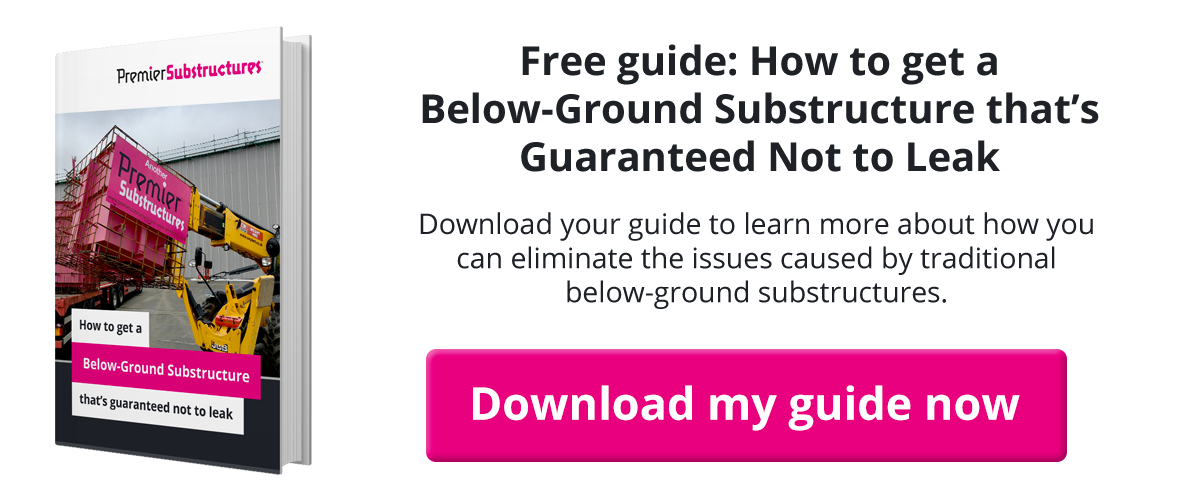If you’re in need of a substructure for your next project, you’ll need assurances that it won’t leak.
Unfortunately, a lot of the time with in situ or precast concrete, there are almost always risks that something might go wrong, leading to cracks and leaks.
The good thing about prefabricated steel is that it’s completely different to the other two methods mentioned above.
For one thing, they’re proven not to leak. Think of them as much like a boat – they’re going to stay watertight for a minimum of 100 years, even in the most acidic conditions.
But what about other waterproofing methods?
Well, as a specialist subcontractor, I’m going to tell you most about the waterproof nature of prefabricated steel substructures, along with an option for further waterproofing.
TIP: For more information on in situ and precast concrete, check out my blog: ‘Why Do Most Traditional Below-Ground Construction Methods Leak?’.
Method 1: The substructure itself
As I mentioned above, prefabricated steel substructures are entirely waterproof in and of themselves. This is due to the fact that they’re a newer, more innovative and utterly revolutionary way of constructing below-ground.
Manufactured entirely out of steel in an off-site factory environment certified to BS En 1090 (i.e. a Construction Project Regulation hEN1090), the manufacturing process involves the construction of steel plates, along with the necessary strengthening to build the substructures.
Code 2 certified welders help to complete the work, before your substructure is transported to site and fixed into position. It’s then back-filled with concrete between the earth and the substructure itself.
The way we construct the substructure means that it cannot be penetrated by water – unless it corrodes enough. This won’t happen for a minimum of 100 years, as certified in an independent report by an expert in the field of corrosion – Dr. J.P. Bloomfield.
TIP: If you’d like to learn more about prefabricated steel substructures, we have a blog all about it!
Method 2: An extra waterproof layer
Depending on the intended use of your substructure, and the level of detailing required, the other option would be to apply a DPM to serve as an additional layer of waterproofing.
This DPM layer would be positioned in the excavation between the earth and the concrete, and is the method we use when constructing in the residential sector to meet BS8102:2009. This allows end users to gain a CML and therefore a mortgage on the property.
This is due to two layers of waterproofing being required to meet this particular British standard.
Advice from a specialist subcontractor
As we’re currently the only ones offering prefabricated steel substructures, and with over 35 years’ under our belts so far, I can confidently say that prefabricated steel substructures are extremely watertight – we certainly haven’t encountered any leaks yet!
However, if you’d like to know more about waterproofing for prefabricated steel substructures, I’d recommend getting in touch with our friendly, expert team – and taking the time to read through some of our case studies.
If you’re an innovative character, you might be able to see some of the benefits far outweigh any risk of this being a method you haven’t tried before. (For example, prefabricated steel can also be built to extremely high tolerances – whilst reducing time spent on-site by 70 – 80%
Conclusion
Thanks for reading. Prefabricated steel is really the only way to completely eliminate the risk of leaks in your below-ground substructure – although, you will see some loose promises, or guarantees (up to around 30 years) for some other waterproofing methods.
Do you want to know more about prefabricated steel substructures? If you have a specific question, fire away in the comments. I’ll be happy to respond!

